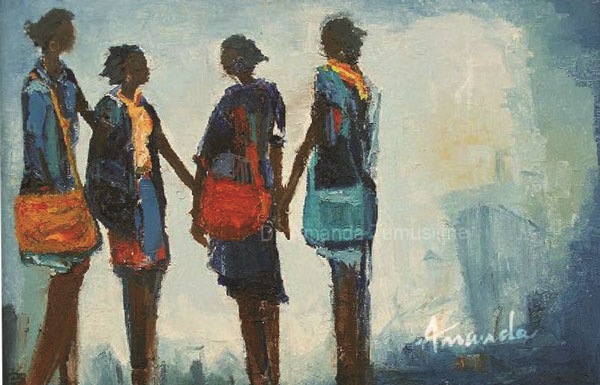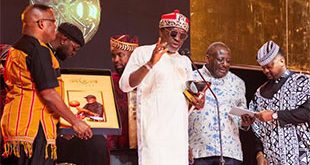
Three women in art: Their works show pain and ecstasy
Kampala, Uganda | DOMINIC MUWANGUZI | Since the traditional era, women have played a central role in art in Africa; mainly infusing artistic attributes to utilitarian objects they create. The basket weaving and beading practiced by ethnic Hima and Tutsi affirm this traditional that continues to be preserved in some societies, especially rural ones.
Although African society is patriarchal: with men taking on the upper role of providing for the household while the woman is resigned to the duty of child-bearing and keeping the home, the African woman has throughout history been seen as a pillar of creativity. She has played a crucial role as an architect of family enterprise where she sells food stuffs in the local market and providing basic essentials like food, water, and sometimes education, to the family.
Such innovative traits manifest in contemporary art as women artists respond to challenges through different mediums. Unlike in the past where woman individually battled stereotypes, today’s woman is supported by an array of women organisations and groups.
In art, these groups champion the women’s cause to ensure their participation in festivals like the Bamako Art Biennale, Johannesburg Art Fair, Venice Biennale and Kampala Art Biennale. Feminist artists like Dr. Amanda Tumusiime, whose artistic repertoire is largely informed by gender and women studies, pick inspiration from them.
In her exhibition titled `Shattered Glass Ceiling, 2014’, Tumusiime explored women emancipation in Uganda in recent times. Tumusiime’s work evoked the achievement of women in one of the most successful countries in terms of promoting women rights.
One picture; `The Graduate’ is a composition of four girls holding school bags and moving forward hand- in-hand. The blue palette is symbolic of blue skies awaiting the graduates. The artwork’s message is of girl-child education as a medium of women emancipation.
Maria Naita’s colourful paintings are subtly gendered, showcasing the woman as a mother, a worker (corporate figure) and housekeeper. Naita’s work is largely influenced by her personal experience as a mother, artist and wife. It is unpretentious when compared to Tumusiime’s art which is primarily inspired by academic research.
Naita also defies stereotypes attached to women artists as painters only. She doubles as a sculptor, a genre that demands handling media like hardwood and concrete. Naita is part of the group that sculpted the Commonwealth Head of governments Meeting (CHOGM) memorial monument 2007, `The Stride’ in Kampala.
Hellen Nabukenya represents the younger generation of female artist and interrogates issues of women as mothers and social activists. Her fabric installations are tailored to figuratively represent the various roles in multi-coloured patterns of embroidery. They are also a motif of the communal nature of women- reflected by the stitching together of the textile with synthetic medium.
One her pieces `Tuwaaye’ is a collective of bright coloured discarded fabrics stitched together and stimulates conversation on the political, social and economic issues affecting women.
These women artists show that strides have been made in raising their profile, the challenge remains in making this emancipatory crusade visible to the wider public.
 The Independent Uganda: You get the Truth we Pay the Price
The Independent Uganda: You get the Truth we Pay the Price



